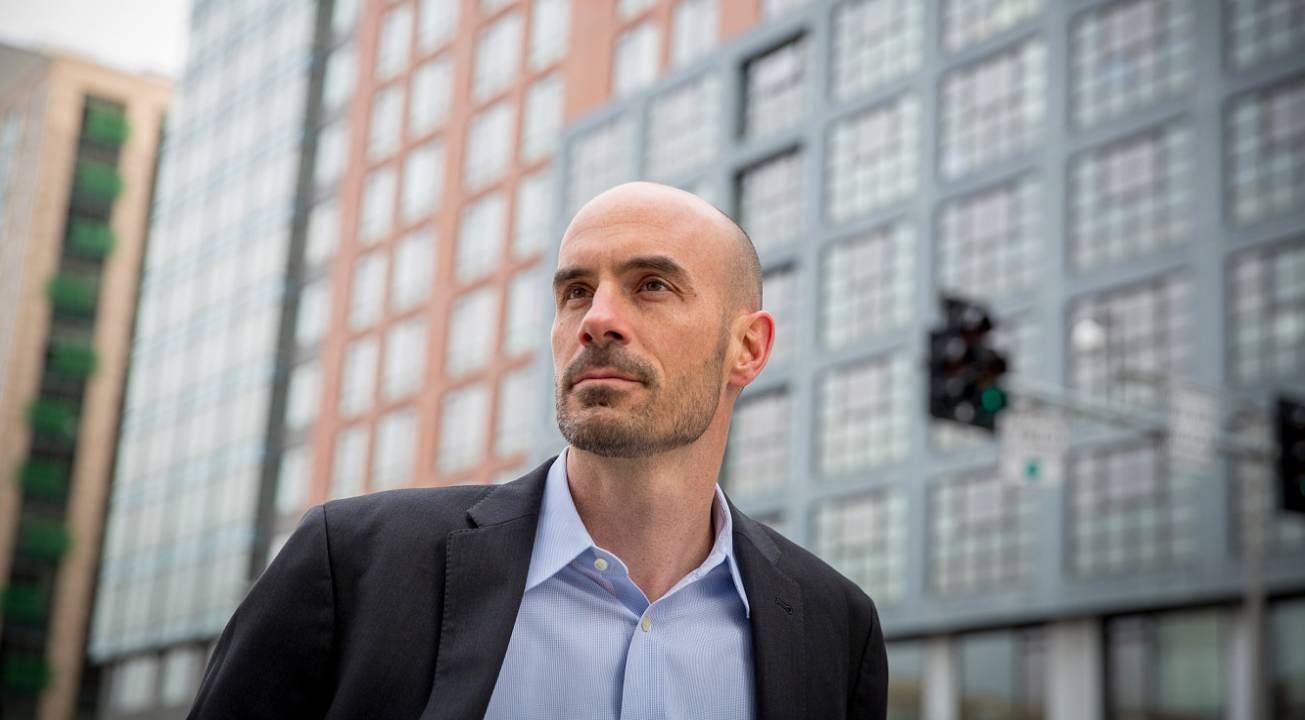Does Your Building Have a Chief Health Officer?
Joseph Allen, Associate Professor of Exposure Assessment Science Environmental Health at the Harvard T.H. Chan School of Public Health, is at the forefront of a growing movement to improve indoor air quality (IAQ) and, along with it, our health, mood, productivity, and mental acuity. Lionel Foster, Head of Platform at Camber Creek, is co-chair of the Pension Real Estate Association’s (PREA) Social Impact Committee and co-founder of the committee’s Real Estate and Social Impact webcast series.
Here is some of what Allen shared during an interview with Foster for PREA members.
“We’ve been in the sick building era for the past 40 years,” said Allen. “Starting in the seventies, we started to choke off the air supply in our buildings. We haven’t designed buildings with optimal ventilation and filtration and healthier materials.”
“We spend about 90% of our time indoors. By the time you hit 80 you’ve spent 72 years breathing the air inside your office, home, car, and school.”
Some people experience “Sick Building Syndrome.” “Sick buildings are worse for our lung health; they slow our cognitive function.”
“The majority of the outdoor air pollution you breathe is from your indoor air exposure.” Ventilation and filtration matter.
Improving indoor air quality can yield high rewards for relatively little cost. “We estimate that the benefit per person is on the order of $6,000 to $7,000 per person per year at a cost of $40 per person per year.”
Your building probably has the equivalent of a Chief Health Officer. You—and the facilities person playing that role—just may not know it yet. “The person who manages your building has a greater impact on your health than your doctor. They’re not given that mandate as part of their job. But the decisions they’re making, the little tweaks they make or the tweaks they don’t make, change the air quality and what you’re breathing every day in these offices, homes, and schools.”
There are powerful policy levers at the state and municipal level: “We can influence this policy discussion and advance this through state and local governance.”
Allen has already been part of real estate due diligence teams, evaluating the health profile of prospective investments. Could this become a trend?
Indoor air quality needs a big boost from more automation. There is a gap between a meter reading and changes to a ventilation or building management system that is filled by people wielding tools or adjusting controls—and that’s in instances when any action is taken at all.
Allen is an advisor on JPMorganChase’s new headquarters construction project, which is expected to be Manhattan’s first all-electric tower. “It has a doubling of the minimum ventilation rate, so a lot more good air quality and high levels of filtration.”Allen’s perspective is changing the way many people look at and think about the built environment. Some of the most forward-thinking groups in real estate work with Camber Creek portfolio company Measurabl to benchmark the environmental performance of their buildings and plan for improvements. For more, listen to this interview with Measurabl CEO Matt Ellis as he discusses indoor air quality and the holistic set of solutions needed to support building sustainability.
Photo by Rose Lincoln for Harvard University
